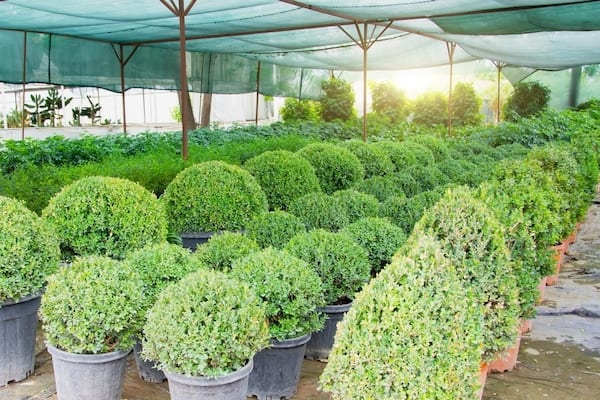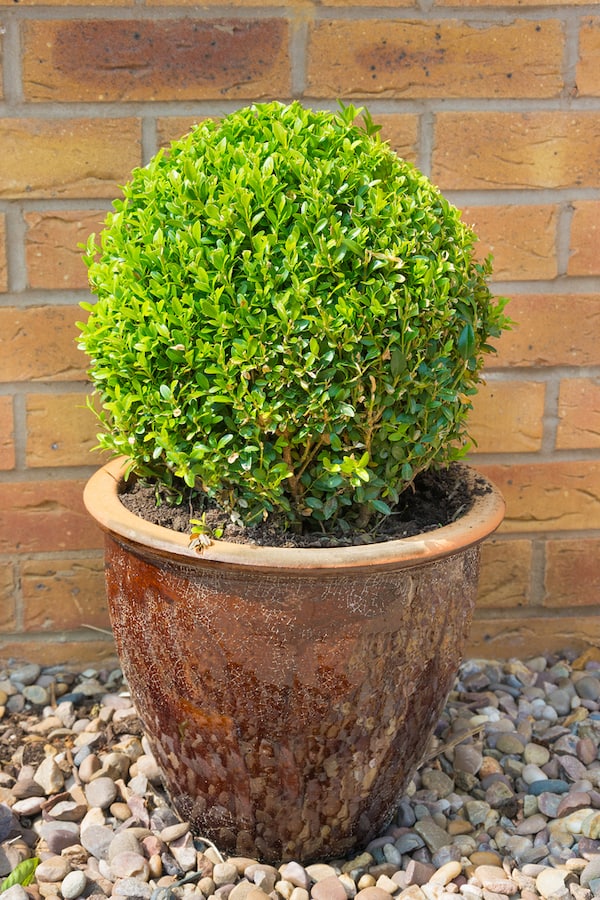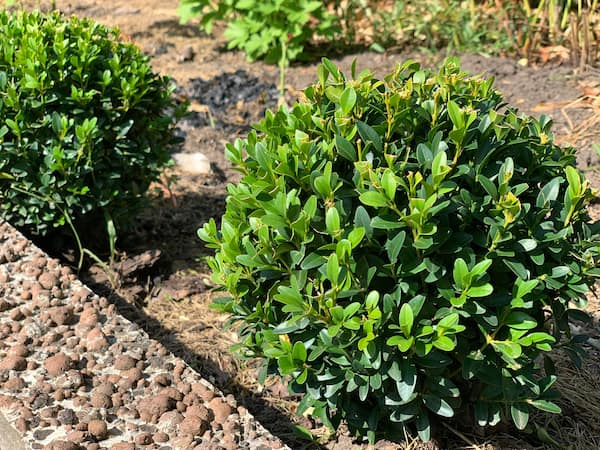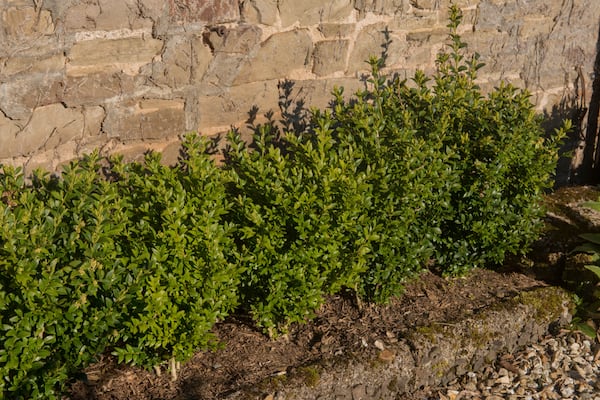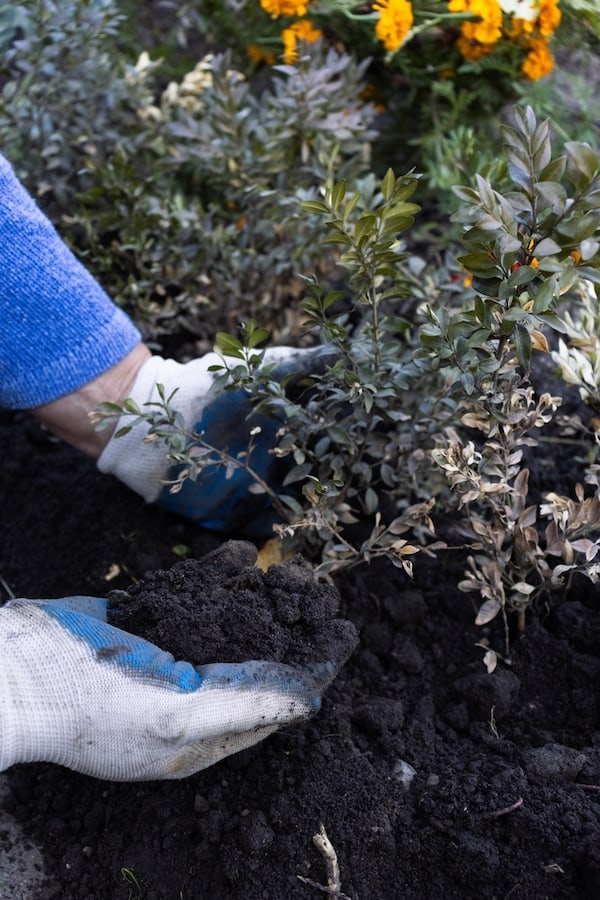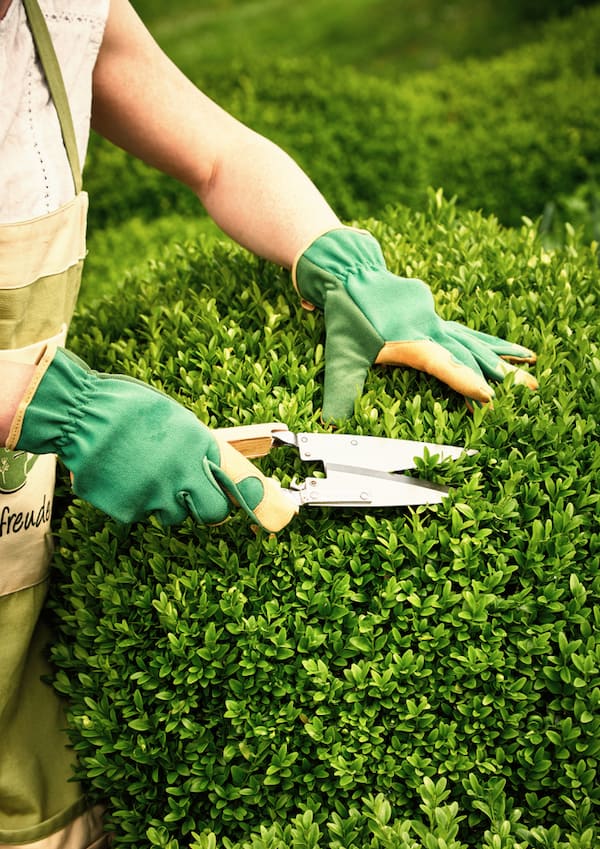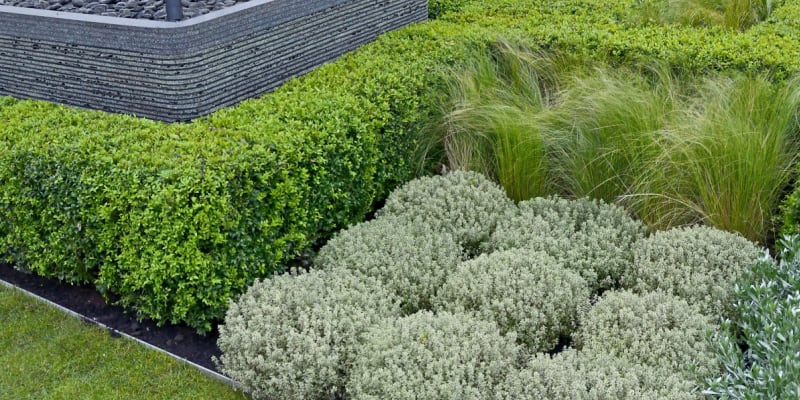
How to plant, grow and care for Buxus (box plants)
Our site is reader supported, this means we may earn a small commission from Amazon and other affiliates when you buy through links on our site.
It’s very easy to plant, grow and care for buxus plants (also known as box plants). Once you’ve spent some time planting them, either in pots or in the ground, they require very little maintenance. Remembering to water them is as tough as their care gets, with just a little pruning but even thats minimal as their fairly slow growing, which is why there also perfect for topiary and small hedges.
In this guide, I cover how to plant the buxus tree in both pots and in the ground, and how to keep it strong and healthy.
Planting buxus in pots
Growing buxus in pots is a great way to add a small tree, perhaps as a topiary, to your front porch or to your patio or deck.
Soak the rootball
The buxus tree you come home with may already be in a pot or it may be wrapped in hessian. You don’t need to remove the buxus from its current pot or wrapping to soak the root ball in a bigger bucket for 20 to 30 minutes. Check that the root is fully saturated.
Prepare the new pot
Your new pot should have several drainage holes in the bottom. Check that this is so. If not, you need to drill new holes. This is easier to do on a plastic pot than on a ceramic one.
Inside the pot, put some broken crockery over the drainage holes. This stops the soil from plugging up the holes. It also adds weight to the pot if you’re using a lightweight plastic or fibreglass one. You can also use stones. (You can always break up an old terracotta pot and use that.)
Fill the pot with soil
Put some compost-based soil in the bottom of the pot. John Innes No 2 potting compost is a good choice as it retains moisture well without getting too saturated. Plus it’s a heavy compost that adds more weight to the pot.
Put in enough soil so that when the root ball rests on it, it reaches to about 3cm below the top of the pot. This makes it easier to water the roots. And it leaves room for you to put some decorative stone on the soil if you wish to cover it up.
Put the plant in the pot on top of the soil. Fill all around the roots with more soil until the root ball is firmly in the soil. Push the soil down firmly to ensure there are no air pockets.
Add decorative stone
In the 3cm gap between the top of the soil and the top of the pot, put some decorative stone. While this look nice, it also serves to keep the soil and roots cool, and to keep the moisture in and stop it from evaporating.
Water the buxus in
Settle the buxus in by thoroughly watering it. Make sure that the excess water runs out from the bottom of the pot.
Planting buxus in the ground
Growing buxus in the ground is a way of having a decorative hedge, perhaps with topiary parts, around your garden or along your driveway.
Find the right location and growing conditions
The best place for a buxus box plant is a location that has well-drained soil (slightly acidic works well) that won’t become waterlogged, no matter how much it rains. The soil needs to be deep for the roots to grow into. Its location needs to be sheltered from winds and bad weather. Buxus plants can suffer leaf scorch from too much sun and harsh winds, so shelter them from these elements.
Buxus trees like both full sun and partial shade. The more light they have, the faster they grow. But they also tolerate full shade so do well under overhanging trees.
Figure out the planting time
The buxus you plan on planting in the ground maybe in a pot or have a bare root covered by hessian. If the plant is a pot, you can put it into the ground at any time. However, plant bare root box plants during their dormant period, from October to April.
Figure out the spacing and dig the holes
Experts recommend that, if you’re growing the buxus into a hedge, use 5 plants per metre of flower bed length. That’s around 20cm between each plant.
Measure where the holes should be in the ground. Then dig the holes. The hole should be about as deep as the spade and three times as wide as the width of the root ball. This encourages the roots to spread outwards.
Work organic matter or compost into the soil. You could even use raised beds as these topiary trees do well in them.
Plant the buxus plants
With bare-root plants, put the plant into the hole so that it’s at the same level it was in the ground at the nursery. You can find this out by looking at the roots and the stem for signs of where the soil came up to before.
For pot plants, plant the buxus so the root ball is within 3cm of the top of the soil.
Once the plants are in the ground, fill the hole with more soil or compost and pack it down quite firmly.
Water the plants in
Water the plants in thoroughly. Ensure that the excess water is draining away through the soil and that the area around the plant is not becoming waterlogged.
Maintenance
Watering
Once the buxus plants are established they’re quite drought tolerant. But they still prefer moist and not wet soil. Look after newly planted trees by keeping them watered. Remember that plants in pots dry out more quickly than plants in the ground.
Keep an eye out for the potting soil or ground becoming waterlogged. If it does, add more organic matter to dry it out and to add drainage ability.
Fertilising
For box plants grown in the garden, it’s not necessary to apply fertiliser, except once in spring. For those in containers, use a slow-release fertiliser when the buxus is first planted.
Copper coloured leaves and those with yellow tips indicate a shortage of nutrients. At this sign, add some fertiliser or a top dressing of compost to the soil.
Mulching
Put organic mulch in a thick layer over the soil in spring or autumn to keep the moisture in the soil. Mulch also improves the structure of the soil as earthworms take it down into the ground.
Pruning
You can prune the buxus tree to remove dead or diseased parts, to increase air circulation and to encourage it to grow.
These plants grow quite quickly in spring to early summer. You can trim and shape the new growth in the middle of summer. Encourage the new growth by leaving some on the plant every time you prune and the buxus becomes quite bushy. Increase air circulation within the plant by removing stems and branches from the inside centre of the plant. This adds to the healthy conditions around the plant.
And remove any dead or diseased leaves, stems and branches as soon as you notice them. Sterilise your cutting tool between cuts when you do this to avoid spreading the bugs or disease around and between the plants.
Problems
The most common issues with buxus is with brown or yellow leaves, both these can be caused by improper watering and nutrients deficiencies. To learn more about yellowing leaves on buxus read this guide here.
Read my guide here to learn more about brown leaves, which is usually a more serious issue.
